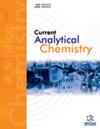植物修复综述:去除有毒重金属
IF 1.7
4区 化学
Q3 CHEMISTRY, ANALYTICAL
引用次数: 0
摘要
:在水中的环境污染物中,重金属和其他污染物已成为一种常见现象。为解决这一问题,人们利用植物修复过程来清除受污染的介质。重金属和其他污染物对水的污染越来越普遍,这引发了一场超越重金属的对话。这些 "其他污染物 "包括多种物质,如营养物质、悬浮颗粒、细菌和有机化合物,如杀虫剂、药物和工业化学品。有几种去除方法可以解决这个复杂的问题。物理技术(如混凝)和化学处理(如过滤)的目标是去除特定的化合物和悬浮物质。生物处理利用细菌或植物等自然机制来分解有机污染物和营养物质。在紫外线照射和臭氧处理等高级氧化程序中使用反应剂来分解污染物。反渗透、蒸馏、离子交换和吸附等技术对于消除水源中的污染物至关重要。综述显示,观赏植物具有吸收重金属并将其储存在根部和叶片中的能力,因此可将植物修复技术应用于观赏植物。分别讨论了确定这些植物的吸收量和积累位置的方法。为了比较植物中积累的重金属水平,对样本进行了消化、干燥和几种植物修复程序。生物修复因其长期应用成本低廉、环境友好而受到广泛关注。观赏植物在植物修复中的应用很少受到关注,重金属对观赏植物的影响也没有得到广泛研究。以观赏植物为媒介对重金属进行修复,可以同时消除毒素和改善场地外观。目前用于去除废水中污染物的净化技术不仅成本高昂,而且对环境也有不利影响。被称为植物修复的环保工艺为目前非常昂贵的净化技术提供了一种具有成本效益和无害生态的替代方法。一些观赏植物适合摄取重金属和其他污染物,而这些污染物的最大浓度是可以确定的。这种方法可利用水生植物和观赏植物有效去除、解毒或固定重金属。评述重点包括目前对重金属对观赏植物毒性的了解、应用重金属的好处、通过增加重金属吸收提高观赏植物耐受性的方法、现场问题以及未来的潜在应用。评估的重点是跨学科方面以及这种方法对重金属可持续处理的理解。这项分析的目的是评估植物修复作为一种创新技术的地位,并讨论其在处理高污染水体方面的潜力和作用。本文章由计算机程序翻译,如有差异,请以英文原文为准。
Review on Phytoremediation: Toxic Heavy Metal Removal
: Among the environmental contaminants in water, heavy metals and other pollutants are becoming a common occurrence. To solve this issue, the process of phytoremediation was utilized to clear up polluted media. Heavy metal and other pollution contamination of water is becoming more common, which has prompted a conversation that goes beyond heavy metals. These "other pollutants" include a wide range of materials, such as nutrients, suspended particles, bacteria, and organic compounds like pesticides, medicines, and industrial chemicals. There are several removal approaches available to address this complex issue. The removal of specific compounds and suspended materials is the goal of physical techniques like coagulation and chemical treatments like filtering. Biological treatments use natural mechanisms to break down organic contaminants and nutrients, such as bacteria or plants. Reactive agents are used in advanced oxidation procedures like UV irradiation and ozonation to break down pollutants. Technologies, including reverse osmosis and distillation, as well as ion exchange and adsorption, are essential for eliminating contaminants from water sources. The review shows applying the phytoremediation technique with ornamental plants that have the ability to absorb and store such heavy metals in their roots and leaves. The methods were used to determine the intake and the location of accumulation in these plants discussed respectively. To compare the levels of the heavy metals accumulated in the plant, samples were digested, dried, and subjected to several phytoremediation procedures. The use of biological remediation has drawn a lot of interest recently because of its inexpensive longterm application costs and environmental friendliness. The use of ornamental plants in phytoremediation has received little attention, and the effects of heavy metals on ornamental plants have not been extensively studied as well. Remediation of the heavy metals mediated by ornamental plants can simultaneously eliminate toxins and improve the site's appearance. The current purification techniques used to remove contaminants from wastewater are not only exceedingly expensive, but they also have a detrimental effect on the environment. The environmentally friendly process known as phytoremediation offers a cost-effective and ecologically sound alternative to the present, very expensive cleanup techniques. Some ornamental plants are suited to ingesting heavy metals and other pollutants where the maximal concentration can be determined. This method effectively removes, detoxifies, or immobilizes heavy metals using aquatic plants and ornamental plants. Review highlights include current understanding of heavy metal toxicity to ornamental plants, benefits of their application, ways to increase ornamental plants' tolerance with increased heavy metals absorption, field problems, and potential applications in the future. The assessment has been focused on the interdisciplinary aspects and understanding that this approach brings to the sustainable treatment of heavy metals. The goal of this analysis was to evaluate phytoremediation's status as an innovative technique and to discuss its potential and utility in the treatment of highly polluted water.
求助全文
通过发布文献求助,成功后即可免费获取论文全文。
去求助
来源期刊

Current Analytical Chemistry
化学-分析化学
CiteScore
4.10
自引率
0.00%
发文量
90
审稿时长
9 months
期刊介绍:
Current Analytical Chemistry publishes full-length/mini reviews and original research articles on the most recent advances in analytical chemistry. All aspects of the field are represented, including analytical methodology, techniques, and instrumentation in both fundamental and applied research topics of interest to the broad readership of the journal. Current Analytical Chemistry strives to serve as an authoritative source of information in analytical chemistry and in related applications such as biochemical analysis, pharmaceutical research, quantitative biological imaging, novel sensors, and nanotechnology.
 求助内容:
求助内容: 应助结果提醒方式:
应助结果提醒方式:


